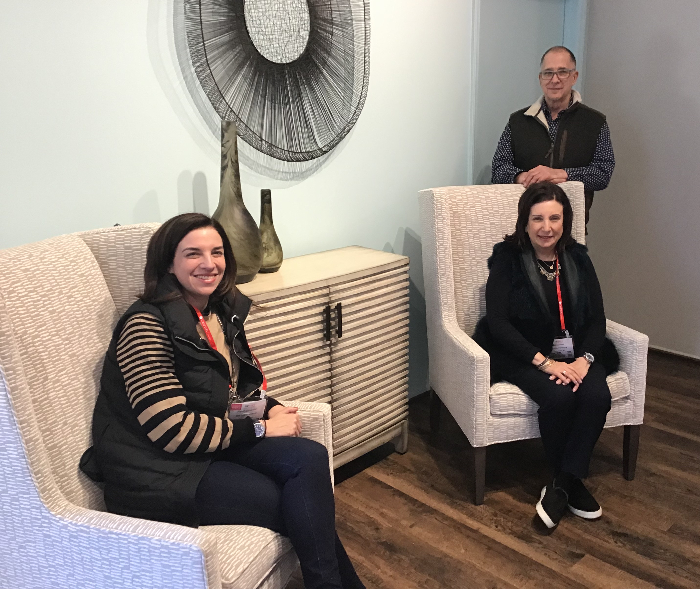Product designer Brett Kladney, who spent several decades as the creative mind and discerning eye behind some of the industry’s best-selling home accessories, recently found something he’s not very good at.
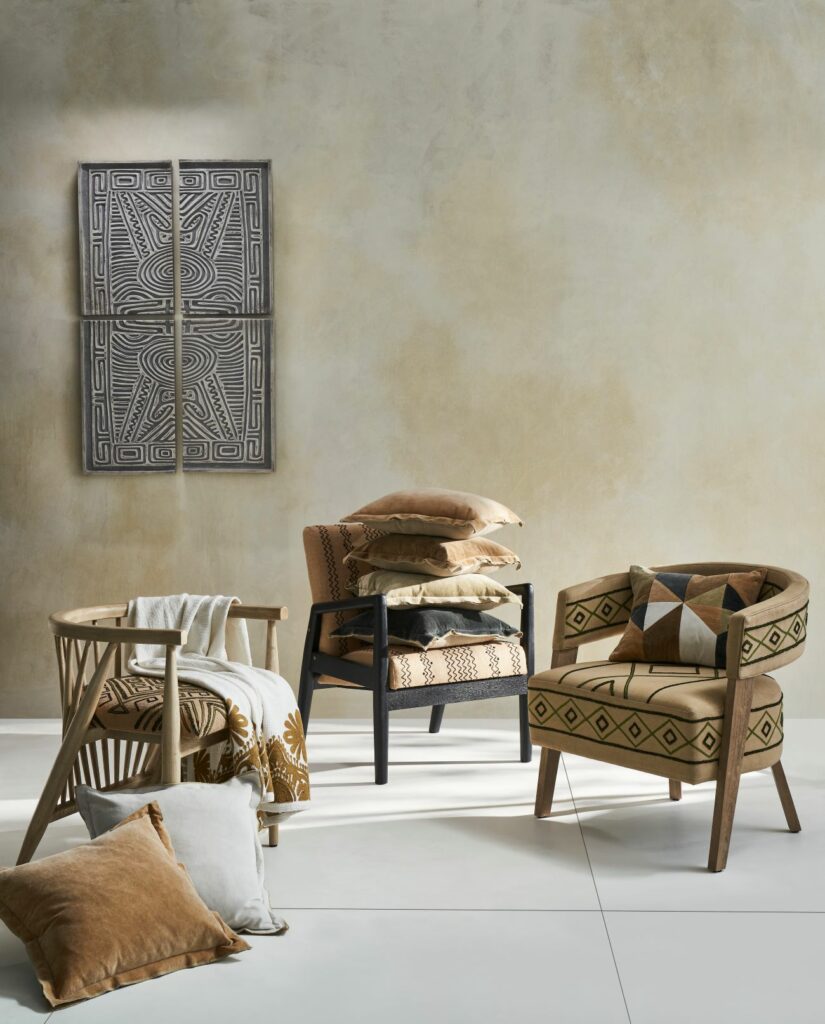
“I guess I failed at retirement,” he says. A few years ago, Kladney, vice president of product design for Pottery Barn for nearly 17 years, decided it was time to relax. He moved to Puerta Vallarta on Mexico’s Pacific Coast.
Then the pandemic hit, slowing travel and drying up revenue streams for local artisans in the tourist destination and throughout Mexico. Kladney, who wanted to help craftspeople find new markets and new customers, joined his husband, Salvador Mascarenas, in opening Hacienda: hda, a retail store, gallery space and interior design service showcasing the country’s artists and artisans.
“These artisans support whole families, whole communities,” Kladney says. “We were thinking, ‘How can we help them?’”
If there was any doubt that Kladney has abandoned the idea of a leisurely retirement spent lounging on the beach, a preview of his new Capiz line with Geniemode at the High Point Market in early April put those questions to rest. “I love creating gorgeous things for houses,” he says.
From concept to debut
Capiz came together quickly — in just three months. Geniemode, a sourcing and supply chain company based in Gurugram, India, approached Kladney to do a line in January. The designer liked Geniemode’s network of production facilities and its focus on technology that makes supply chains more transparent. Geniemode liked Kladney’s history of creating successful home furnishings lines. In addition to his years with Pottery Barn, Kladney also designed collections for Bergdorf Goodman, Henri Bendel, Barneys, Bloomingdale’s and others.
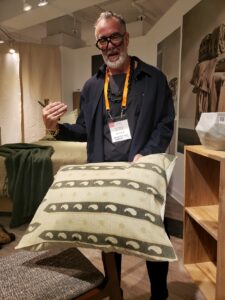
“The Capiz collections are stand-alone but they also showcase our capabilities for other brands,” says Amit Sharma, Geniemode co-founder and chief executive officer, “and we wanted to give our clients a visual. Explaining sourcing and supply chain is complicated, but when you can look at a piece from our collection and define its origins and design and know how it came to market, it’s a game changer.”
After working for three months with teams in India, Mexico and the United States, Kladney was sitting in an International Home Furnishings Center showroom richly layered with a portion of the case goods, upholstery, lighting, rugs, textiles, tabletop and decorative accessories included in the 300-product line.
Capiz targets specialty retailers. An additional, price point-driven collection, called Etc. that’s warehoused in High Point, also is available, according to Geniemode. “We can service mom-and-pops or we have the capabilities to put this into a large, nationwide retailer,” Kladney says, adding Capiz may even show up in retail stores in the metaverse. “With Geniemode’s capabilities, we can service whoever we’d like to.”
Capiz’s four moods
Capiz includes four collections, or moods, as Kladney prefers to call them:
- Rustic Modern features neutral tones, clean lines and transitional looks
- Shelter, with darker woods, charcoal hues and rich textiles, has an edgier feel
- Organic Sanctuary is built around a sun-washed palette, natural acacia wood, jute and marbleized clay
- Haven, a minimalist group, is inspired by the scale and aesthetic of both Danish and Japanese design.
“Tension in design is very important to me — hard with soft, old with new,” Kladney says.
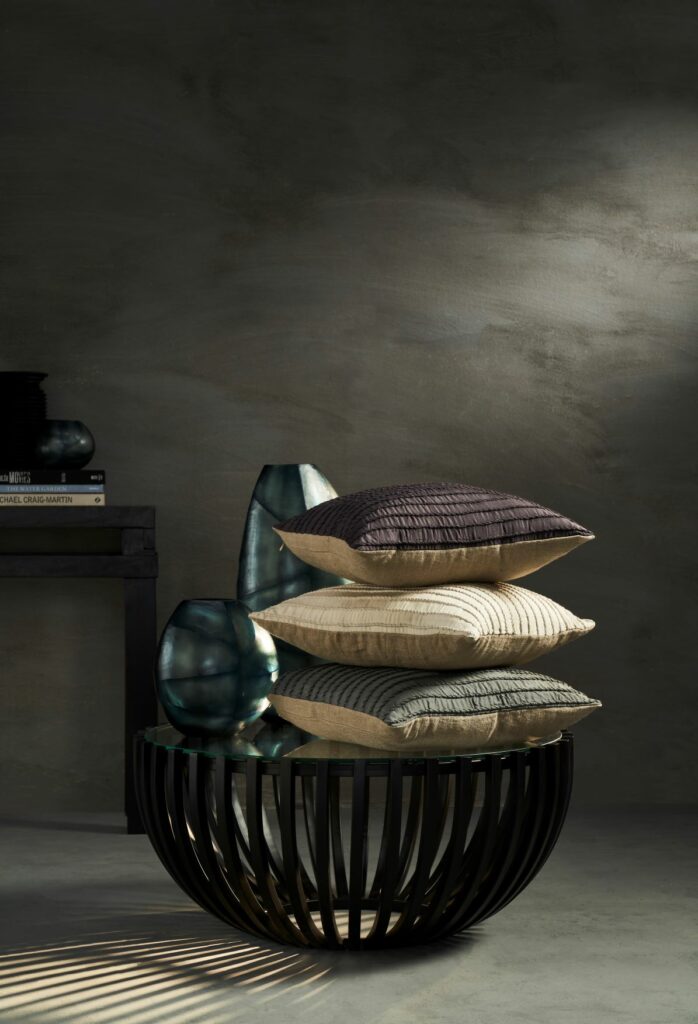
For Capiz, Kladney designed multifunctional, mobile pieces — table trios that can be pulled apart or used together, a shadow box coffee table that can display treasures gathered during travels, chairs on casters.
He also wanted a textural, detail-rich collection that stimulates the senses. Some visitors to Geniemode’s High Point showroom went home not just with marketing materials about the collection but also an oil diffuser with bergamot top notes, all in a woven bag.
As Kladney talks about Capiz, he focuses on the details, picking up a block printed pillow and gesturing to an embossed lamp to show the imperfections that come from handcrafting, noting the delicate hand stitching on silk.
But the designer also wants to support artisans’ work and stretch their capabilities in new ways. As example, he points to a pale gray vessel that looks, even close up, like marble or stone. But it is the result of a collaboration with a glass artist.
“It’s all about supporting the artisan,” he says. “The more we can teach and help the craftsman, the better they can support their families and continue their work. What I want to be remembered for is who I helped.”
QR codes on Capiz products will tell not only the materials used in each piece, but also the artisan behind it. Retailers also can use the QR codes to follow orders through the supply chain. “We want to tell the story behind each product,” Kladney says, “and to offer full transparency to the retailer. Whether they order two pieces or an entire collection, they can track the logistics.”
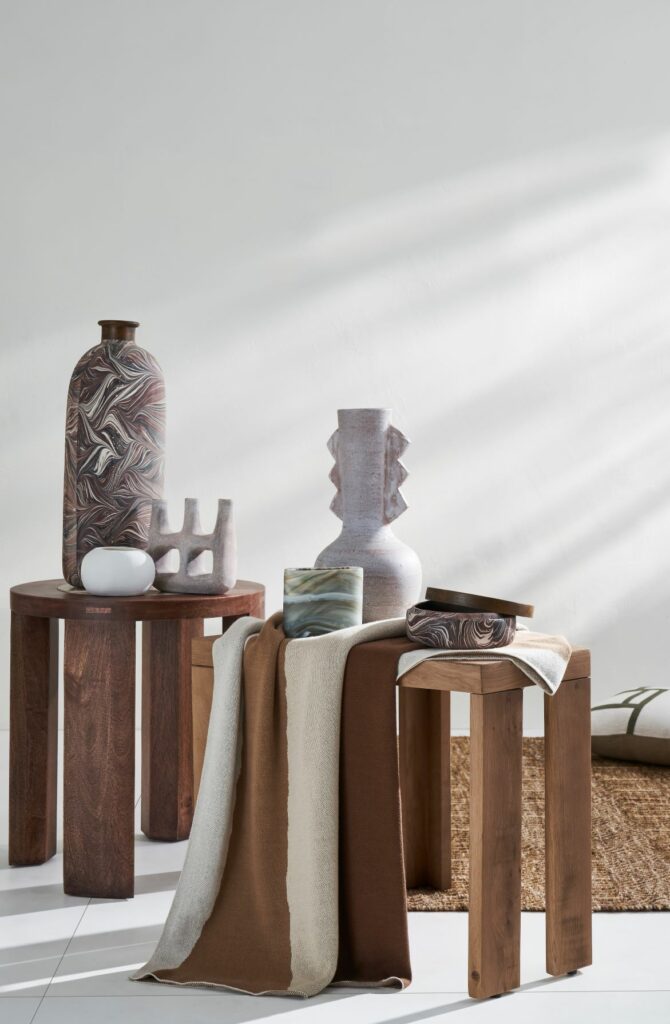
Retailer tip: Even with Capiz’s compressed timeline from concept to design to production to debut in High Point, Brett Kladney wanted pieces photographed well. Some of the images were on display in the showroom in April. They’re also available for the line’s retail customers to use in-store or online. The images help to create a mood and maintain a consistent point of view for the line, he says.




